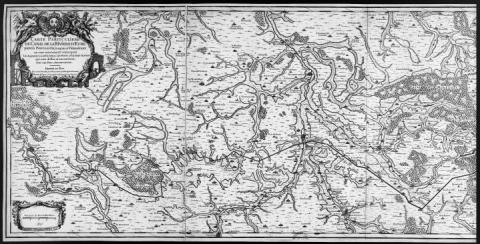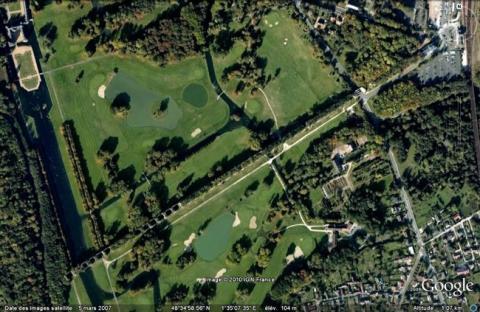Maintenon Aqueduct
History and description
The creation of the Eure canal was decided on in around 1684 in order to remedy a lack of water in Versailles. The Machine de Marly did not allow sufficient supply to the jets of water at Versailles. For this reason, Louis XIV and Louvois decided to divert the water of the Eure river, flowing eighty kilometres away, following multiple attempts to obtain water from local sources, and multiple aborted projects, presented by Pierre-Paul Riquet in 1674 (who had planned to divert the Loire) and the Francine brothers in 1678 (who strove to divert the Essonne). The idea of diverting the Eure was settled on in 1684 after which the statements of the Academy of Sciences confirmed that the course of this river, around Pontgouin, was located eighty feet above the basins of Versailles. Vauban was tasked with the implementation from February 1685, joined by Jean de Mesgrigny, Isaac Robelin, Simon Vollant, Daugecourt and Parisot. He designed a canal 14 metres wide by 2.5 metres deep with an incline of 15 centimetres per kilometre, including various zones: canal outdoors, on embankments, in tunnels and siphons. The valley of the Eure in Maintenon was one of the main obstacles on this route. To overcome it, it was decided to construct an aqueduct. The project of Vauban consisted of an aqueduct with archways on multiple levels of archways (three in the middle, the number of levels is reduced towards the edges of the valley). The first level included archways which were 28.50 metres high and five metres wide. The final level allowed water to pass through via ducts made of iron and was linked to the solid earth via siphons and talus. There were forty-seven archways, one of which was larger to overlook the route. To meet the requirements of the canal, the course of the Eure was regulated by the construction of five locks between Nogent-le-King and Maintenon, as well as its two tributaries, the Voise and the Rouette. Two channels parallel to the aqueduct also had to be built.Commencing in 1685, the construction was interrupted in 1692 following the financial difficulties in the kingdom caused by the war of the League of Augsbourg, the revolts of the revocation of the Nantes Edit and the food shortages which affect the peasantry. The aqueduct was only partially completed (only the first level was constructed) but was not linked to the flanks of the valley. The penstocks were never laid, and the site was very rapidly used as a quarry for the local residents. In the 18th century, new projects were set out to finish the channel but remained incomplete.
Current state
The aqueduct of Maintenon still exists, but is in ruins. At multiple points, the base of the archways has collapsed and only the walls of the flanks remain in place. An association has taken on the task of restoring and preserving these remains. It has also decided to try and preserve the other remaining parts of the Eure canal.
Aqueduc de Maintenon
Aqueduc de Maintenon
48° 34' 58" N, 1° 35' 7" E
Type
aqueduct
Engineers
Sébastien le Prestre de Vauban
Department
Eure-et-Loir
Region
Centre-Val de Loire
Bibliography
- ADGE (M.), BRAGRARD (P.), (et alii), Vauban et les voies d’eaux, Paris, 2007.
- Association Pour l’Etude et la Sauvegarde des Vestiges du Canal de Louis XIV et de ses Environs, site officiel, http://claude.millereux.free.fr/Canal/canal_asso.htm.
- BLANCHARD (A.), Vauban, Paris, 1996.
- Château de Maintenon, Site officiel : www.chateaudemaintenon.fr.
- DESPOT (G.) et GALLAND (J.), Histoire du Canal Louis XIV de Pontgouin à Maintenon, 2006.
- PINON (P.), Canaux, rivières des hommes, Paris, 1995.
- PINON (P.), « Les canaux de navigation et l’aqueduc de Maintenon » in Vauban, Bâtisseur du Roi-Soleil, Paris, 2007, p.207-213.
- LE ROI (J.-A.), Des eaux de Versailles considérées dans leurs rapports historiques et hygiéniques, Versailles, 1847, p. 20, 29, 175.
- MORERA (R.), « Le maître des Rives du Royaume » in Historia, n°106, Paris, 2007, p.46-52.
- SARMANT (T.), Les demeures du soleil, Seyssel, 2004, p. 141-148 et 208-217.

